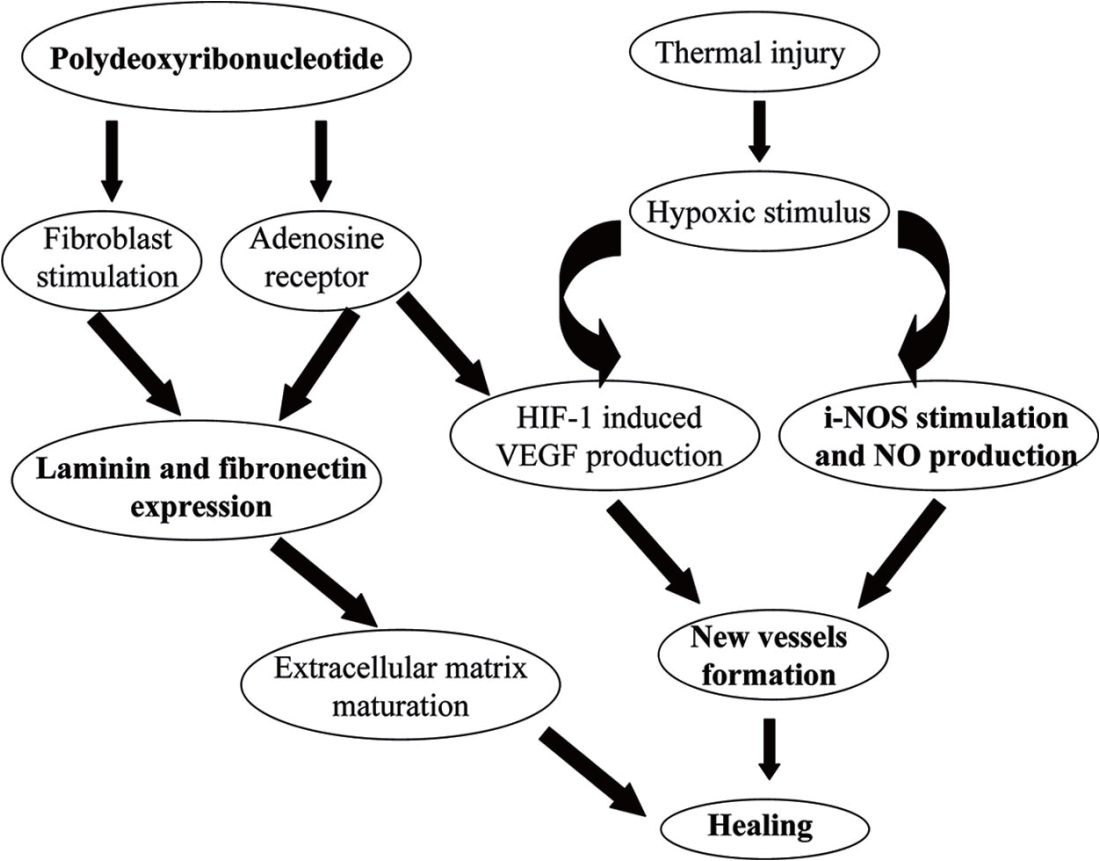
▶ Previous Artlcle: #4-4. Types of PDRN/PN and Cosmetic Procedures
Epidermal keratinocytes, laminin, type IV and VII collagen, and type I and III collagen of the upper papillary dermis are closely linked to being involved in the growth and regeneration of the epidermis and dermis.
PDRN/PN, therefore, induce anti-inflammatory action, angiogenesis, dermis regeneration through collagen regeneration, and generation of laminin and fibronectin, important components of the BM, strengthening the three-step linkage of epidermis-BM-dermis.
(Currently the research institute of PharmaResearch performs a study on the epidermal filaggrin from the actions of PDRN.)
.jpg)
[Advertisement] FCR® (Fractional Prickle CoralCalcium Regentron) – Manufacturer: (www.illglobal.com)]
Laminin and Fibronectin in Wound Healing
When the skin is wounded, monocytes move to the site and react with fibronectin secreted from neutrophils to differentiate into macrophages, which secrete TGF-ß1, VEGF, PDGF, and FGF that are significant in wound healing.
Meanwhile, matrix metalloproteinases (MMP) fragment laminin, which is connected to the ECF receptors of fibroblasts, then being involved in the migration and proliferation of keratinocytes.
Thus, keratinocyte, fibroblast, laminin, and fibronectin are closely linked with each other, and during processes involved with them, various growth factors induce the restoration and regeneration of the extracellular matrix (ECM).

Figure 3. action mechanism on the Laminin.Fibronectin (Alessandra Bitto, MD, et al. Polydeoxyribonucleotide improves angiogenesis and wound healing in experimental thermal injury. Crit Care Med. 2008 May; 36(5): 1594-1602.)
-To be continued



















